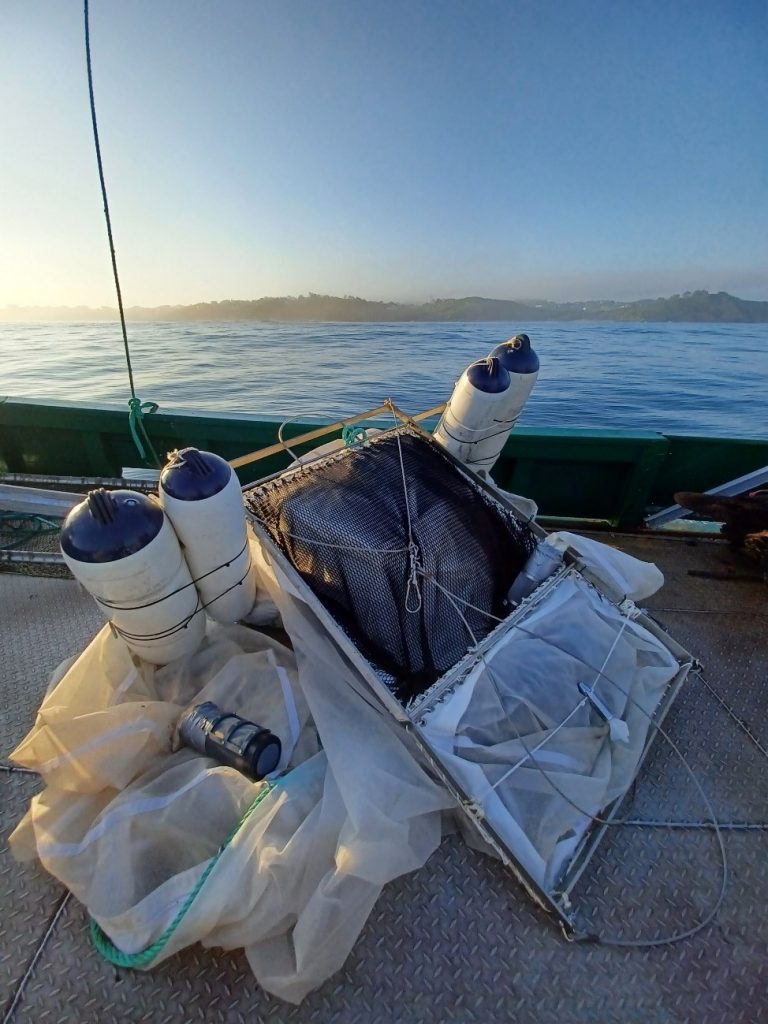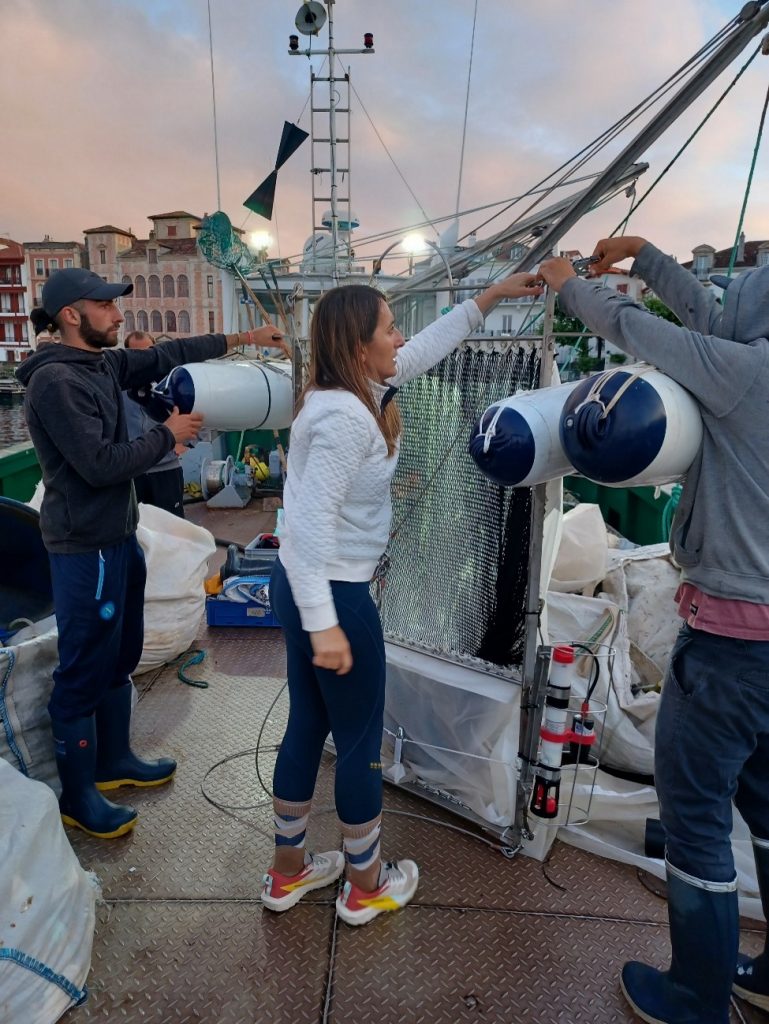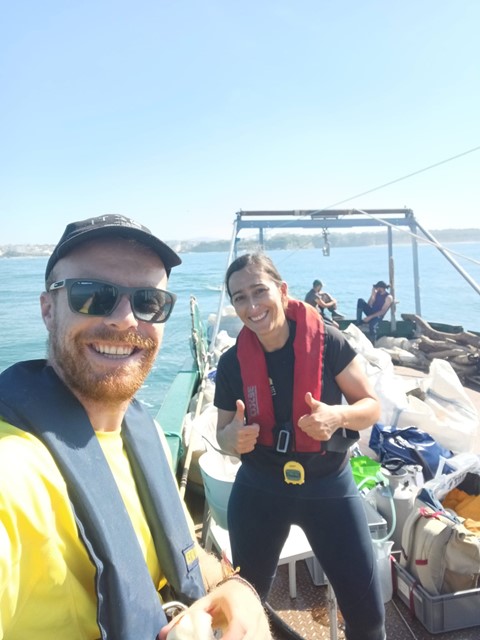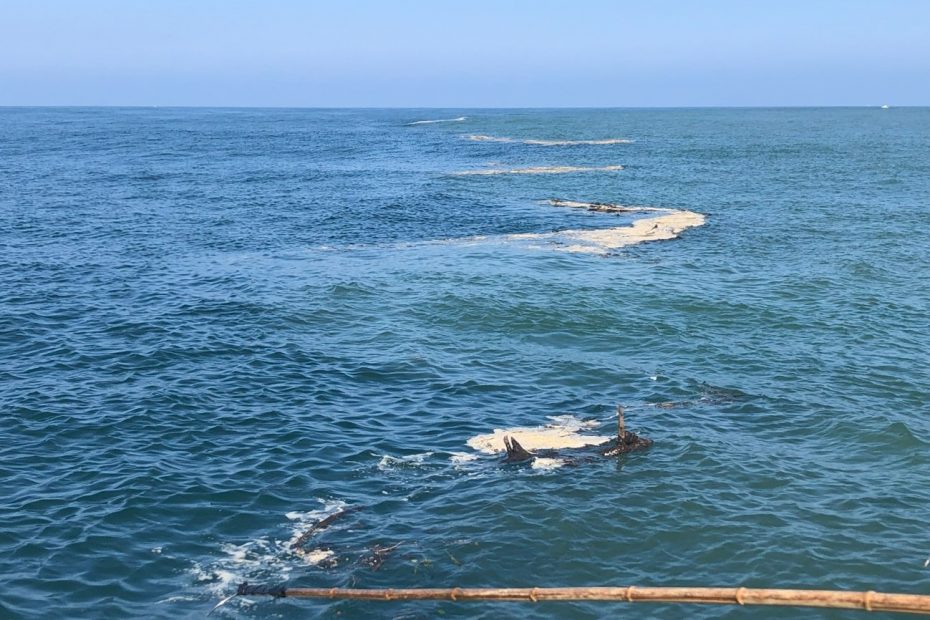In June, we conducted pioneering sea surveys and microplastics sampling in the southeastern Bay of Biscay. On the 19th, we sampled at three different stations along a 10-kilometer transect near the France-Spain boundary. These stations served as a litter-free control area. Onboard the Ekocean Explorer tender vessel, we tested an innovative reinforced net specially designed by Azti team and constructed by Naberan to capture both macro and microlitter within litter windrows, ranging from the surface down to 1.5 meters deep. The net was also equiped with a RBR CTD to register temperature and salinity data during the trawls. Additionally, we deployed 10 drifters with and without drogue to study the behaviour of litter objects under varying ocean current and wind conditions.
On the 24th and 25th, we set sail aboard the Itsas Belarra artisanal fishing vessel from Saint Jean de Luz port. During these days, we conducted adaptive surveys, specifically targeting coastal current convergence structures, which are long small-scale linear streaks often accumulating significant loads of floating marine litter and foam. Additionally, we deployed five drifters to track the evolution of the observed coastal convergent structures. We also had the delightful company of additional crew members—dolphins—who joined us during part of our work.




Special thanks to Bea, Udane, Ekaitz, Lander and Gaizka for their help with the net designs and contruction and to Pedro and Arnaud, and the collaborative and engaged crews of Ekocean and Itsas Belarra and for their help at sea. A shout-out to Syndicat Mixte Kosta Garbia for their support, allowing us to embark on Itsas Belarra. And let’s not forget the friendly citizens who pitched in to recover some beached drifters!
Data processing is ongoing. Stay tuned for upcoming news and more surveys!
